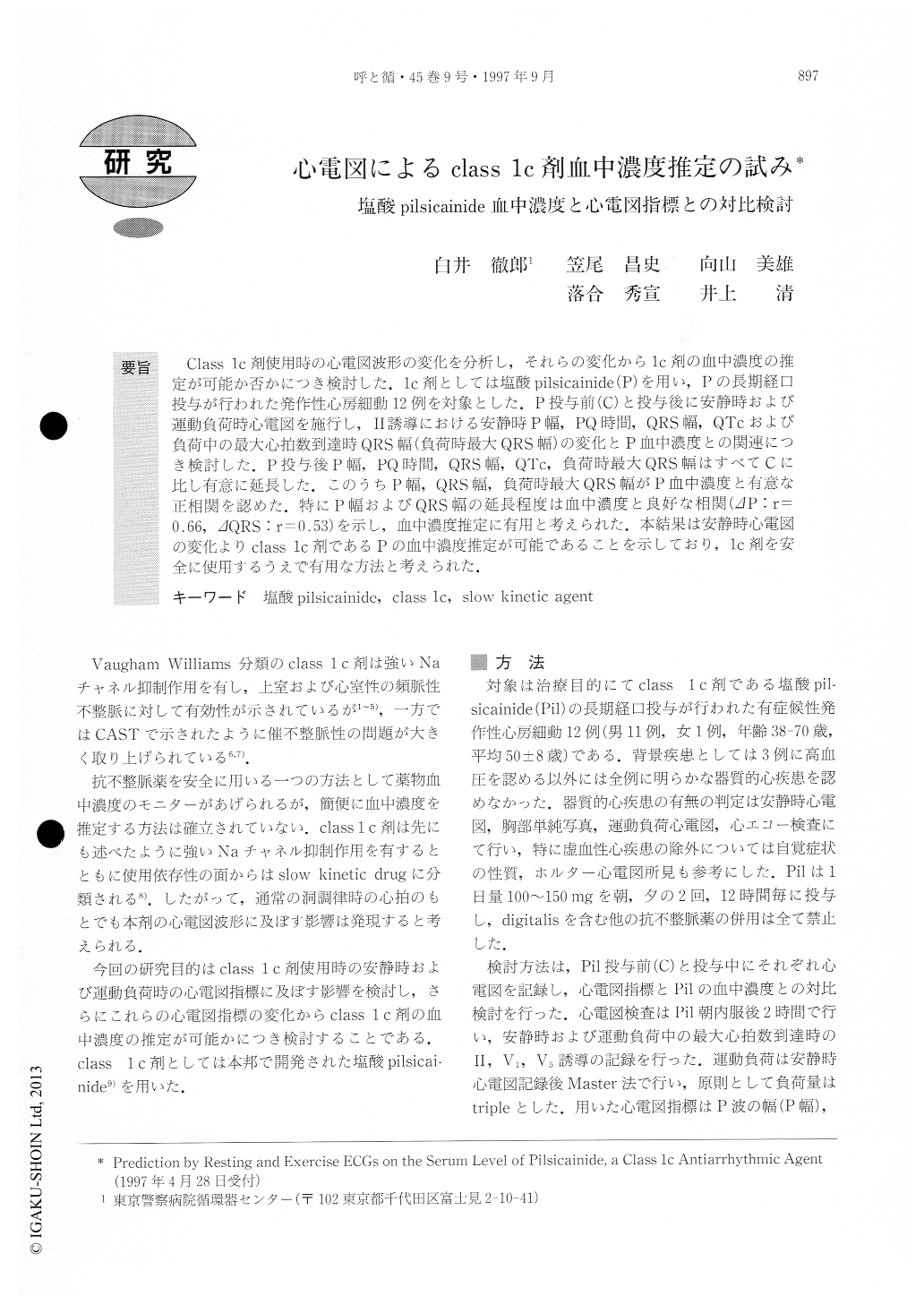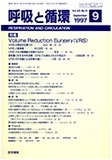Japanese
English
- 有料閲覧
- Abstract 文献概要
- 1ページ目 Look Inside
Class 1c剤使用時の心電図波形の変化を分析し,それらの変化から1c剤の血中濃度の推定が可能か否かにつき検討した.1c剤としては塩酸pilsicainide(P)を用い,Pの長期経口投与が行われた発作性心房細動12例を対象とした.P投与前(C)と投与後に安静時および運動負荷時心電図を施行し,II誘導における安静時P幅,PQ時間,QRS幅,QTcおよび負荷中の最大心拍数到達時QRS幅(負荷時最大QRS幅)の変化とP血中濃度との関連につき検討した.P投与後P幅,PQ時間,QRS幅,QTc,負荷時最大QRS幅はすべてCに比し有意に延長した.このうちP幅,QRS幅,負荷時最大QRS幅がP血中濃度と有意な正相関を認めた.特にP幅およびQRS幅の延長程度は血中濃度と良好な相関(ΔP:r=0.66,ΔQRS:r=0.53)を示し,血中濃度推定に有用と考えられた.本結果は安静時心電図の変化よりclass 1c剤であるPの血中濃度推定が可能であることを示しており,1c剤を安全に使用するうえで有用な方法と考えられた.
Because of the proarrhythmic effect, the safety of the use of class 1c antiarrhythmic agent has been a matter of debate. The aim of this study is to develop a simple test to predict the serum level of pilsicainide (Pil) known as a new class 1c agent using both resting and exercise ECGs. The inter-relationship between the serum level of Pil and ECG measurement variables was evaluated in 12 patients with symptomatic paroxysmal atrial fibrillation. 33 samples of blood were taken at different periods before and after the treatment'of Pil. ECG measurememnt variables were the at-rest width of P wave (P), QRS wave (QRS), PQ interval, QTc, and the width of QRS wave at the maximum HR during exercise (max. QRS). The ECG was recorded at the paper speed of 50mm/sec and the measurements were made by a scaled magnifying scope. Control data (C) was gathered before treatment. P, QRS, PQ, QTc, and max. QRS increased significantly after treatment with Pil, but HR at rest and max. HR during exercise did not. SC was 0.43±0.16μg/ml. The correlation between SC vs P, QRS, max. QRS was statiscally significant, while that between PQ and QTc was not. The coefficient value between SC and the increment of P (ΔP: Ppil-Pc) and QRS (ΔQRS: QRSpi1-QRSc) was high (ΔP: r =0.66, ΔQRS: r=0.53). It is concluded that the serum level of Pil is predictable by ΔP and ΔQRS due to its slow kinetic characteristics. This provides a simple method for the safe use of class 1c antiarrhythmic agent.

Copyright © 1997, Igaku-Shoin Ltd. All rights reserved.


